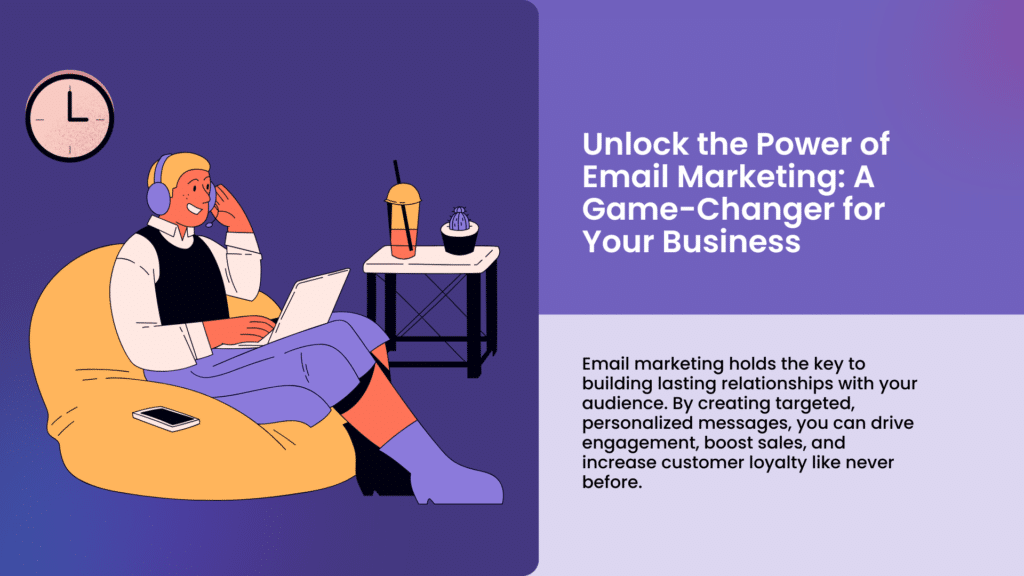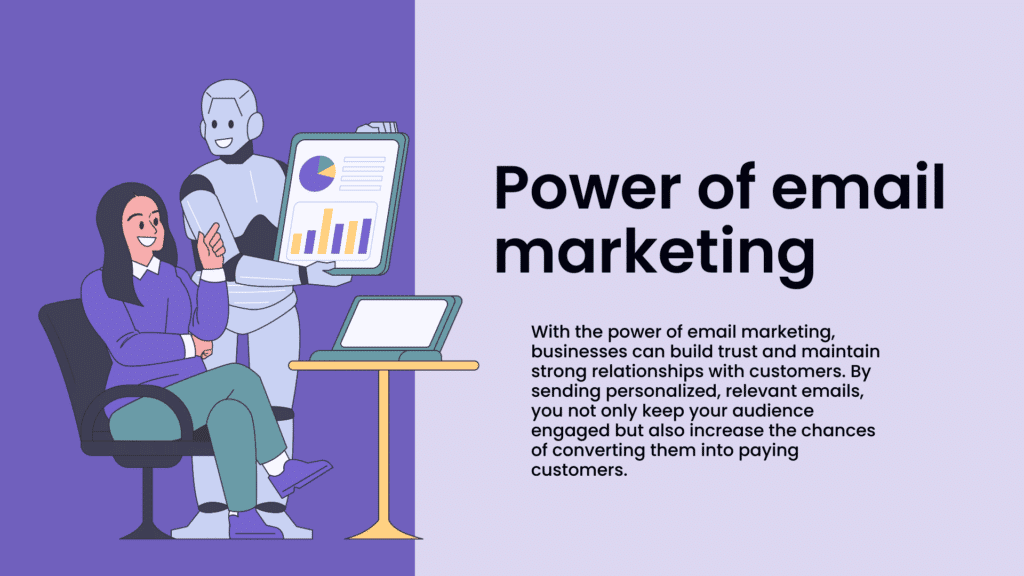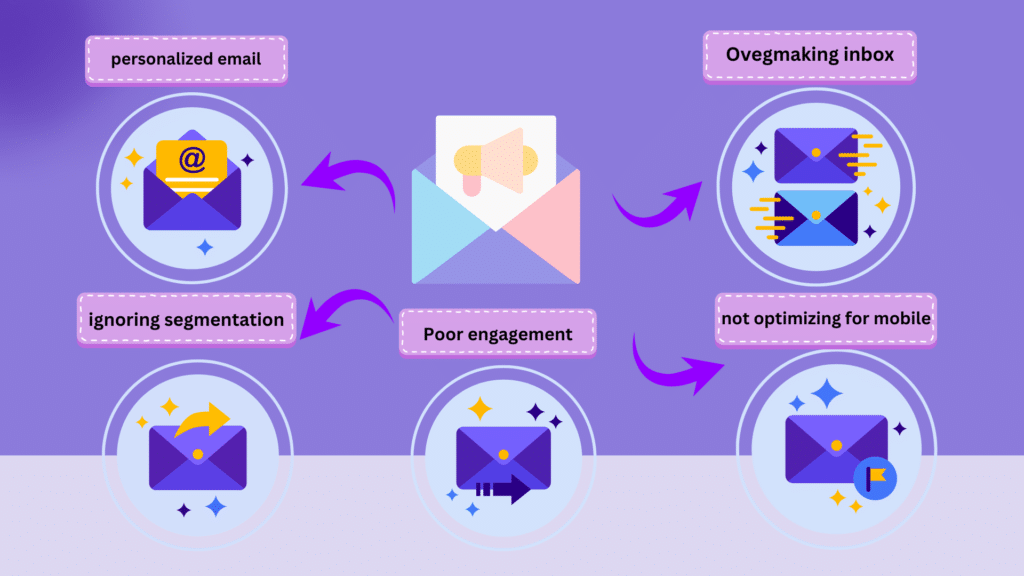Before starting the email marketing customer journey, here are 5 key steps to choose the best digital marketing agency. Let me tell you that 98% of people don’t use email campaigns in digital marketing—something I also missed in the first 3 years. Imagine the huge mistake I made! Now, email campaigns are our core, and everything we’ve built comes from them. With email campaigns, we can build relationships and personally connect with people. Unlike social media platforms like YouTube and Instagram, the reach of your audience is in your hands, making email marketing incredibly important. So, let’s dive into what email marketing is.

What is Email Marketing?
Email marketing is a powerful digital marketing strategy that uses email to promote products, services, or brand awareness while building and nurturing customer relationships. It’s vital to understand how the email marketing customer journey plays a pivotal role in nurturing those relationships.

Unlock the Power of Email Marketing: A Game-Changer for Your Business
Think about it: professionals are most active on email. It’s a direct and personal communication channel. By understanding the email marketing process, you can engage with your audience effectively and drive conversions.
The Power of Email Marketing in The Digital age
Think about it: professionals are most active on email. It’s a direct and personal communication channel. As someone in digital marketing, I’ve observed that the audience most likely to convert into paying customers are those who actively engage with the email marketing customer journey, far more than those who engage on other platforms.

In fact, the revenue generated through email marketing customer journey often surpasses what we earn from platforms like Instagram or YouTube. If you’re not leveraging email marketing, you’re missing out on one of the most powerful tools for growth.
Email Marketing Jobs & Opportunities in 2025
Email marketing is booming, and so are career opportunities in this field. In the digital age, companies are looking for skilled email marketers to manage campaigns, nurture leads and increase conversions. Check out top email marketing job opportunities here.
Top Email Marketing Services
To maximize results, use top email marketing services like Mailchimp, Constant Contact, and GetResponse. These tools simplify campaign management, audience segmentation, and real-time performance tracking.
Top Email Marketing Tools for real customer services
Use advanced tools like ConvertKit, ActiveCampaign, and HubSpot for designing effective campaigns, tracking metrics, and achieving higher conversions. These tools help businesses streamline email marketing strategies and real-time customer service.
IS Email Marketing Dead? Not At All!
Some marketers misuse email marketing by purchasing email lists or sending unsolicited emails, which is illegal and ineffective. Focus on building an organic email list to boost engagement and open rates.

Why Email is More Important Than Ever
Email is essential in today’s world. It’s a long-term communication tool that helps businesses connect with their audience effectively. Studies show a $40 return for every $1 spent on email marketing—making it one of the most powerful digital marketing strategies.
Stages of the Email Marketing Customer Journey
Explanation:
The email marketing customer journey involves several stages that guide a potential customer from learning about your brand to becoming a loyal client. These stages include:
- Awareness: Attract potential customers with engaging content like newsletters, blog links, or promotional offers. This is where they discover your brand.
- Consideration: Build trust by sharing valuable insights, case studies, or product demos. Use email sequences to nurture leads and educate them about your offerings.
- Conversion: Encourage subscribers to take action by offering discounts, free trials, or exclusive deals. Use personalized emails with strong CTAs (call-to-actions).
- Retention: Stay connected with existing customers through loyalty programs, regular updates, or helpful tips, ensuring they stay engaged.
- Advocacy: Motivate satisfied customers to become brand ambassadors. Request reviews, testimonials, or referrals via email campaigns.
This journey ensures that every email serves a purpose, aligning with the customer’s needs at every stage. When executed well, it results in higher engagement, stronger relationships, and increased conversions
How to Measure Success in the Email Marketing Customer Journey
To gauge the effectiveness of your email marketing campaigns, it’s crucial to track key metrics that reflect how well you’re engaging with your audience and driving conversions. Below are the most important metrics to consider:
- 1. Open Rate
- This metric shows the percentage of recipients who open your emails. It helps you evaluate whether your subject lines are effective and if your emails are reaching your audience.
- 2. Click-Through Rate (CTR)
- CTR measures how many people clicked on the links within your emails. This is crucial for understanding how compelling your content is and whether your audience is engaging with your calls to action.
- 3. Conversion Rate
- Conversion rate tracks how many recipients took the desired action after clicking through your email (e.g., making a purchase, signing up for a webinar). This metric tells you how well your email is driving actual business outcomes.
- 4. Bounce Rate
- Bounce rate indicates the percentage of emails that couldn’t be delivered to the recipients’ inboxes. A high bounce rate can suggest problems with your email list quality or technical issues.
- 5. Unsubscribe Rate
- The unsubscribe rate tells you how many people opted out after receiving your email. A high unsubscribe rate can indicate that your emails aren’t resonating with your audience, or you’re emailing them too often.
- 6. Spam Complaints
- Tracking how many subscribers mark your email as spam is essential for maintaining a positive sender reputation. High spam complaints can negatively affect your deliverability rates.
- 7. Return on Investment (ROI)
- This is a key metric that measures the financial impact of your email marketing efforts. It’s calculated by comparing the revenue generated from your emails to the costs of running the campaigns. A positive ROI means your efforts are paying off.

Solutions to Improve Your Email Marketing Strategy
To overcome these common mistakes, here are a few solutions that can help you refine your email marketing strategy:
- Use Automation Tools: Email marketing automation tools like Mailchimp, ConvertKit, and ActiveCampaign can help you personalize emails, segment your list, and schedule your campaigns efficiently.
- A/B Testing: Regularly test subject lines, email content, and send times to understand what works best with your audience.
- Monitor Performance: Track your open rates, click-through rates, and unsubscribe rates to gauge the effectiveness of your campaigns. Use these insights to optimize future emails.
- Focus on Mobile Optimization: Since many users check emails on their phones, prioritize mobile-friendly designs.
- Create Value: Offer valuable content, exclusive offers, and engaging visuals to keep your audience interested in your emails.
Common Mistakes in the Email Marketing Customer Journey
Explanation:
In this section, we’ll discuss common mistakes marketers often make in email marketing and provide solutions to help improve your strategy.

1. Non-Personalized Emails
Mistake: Sending generic, one-size-fits-all emails without addressing the unique needs of your audience.
Solution: Personalize your emails by using your subscribers’ names and segmenting your audience based on their behavior, preferences, or purchase history. Tailoring your messages can increase engagement and conversions.
2. Overloading Inboxes with Too Many Emails
Mistake: Bombarding subscribers with frequent emails can lead to unsubscribes or email fatigue.
Solution: Establish an email schedule that isn’t overwhelming. Focus on quality over quantity and ensure your emails provide value to your subscribers. Test email frequency and find the right balance.
3. Ignoring Segmentation
Mistake: Sending the same email to all subscribers, without considering their interests or past behavior.
Solution: Segment your email list based on factors like demographics, location, or past interactions. This ensures your emails are relevant to each group, leading to higher engagement rates.
4. Poor Subject Lines
Mistake: Writing bland or unclear subject lines that fail to grab attention.
Solution: Write compelling and concise subject lines that spark curiosity or urgency. A great subject line can make the difference between your email being opened or ignored.
5. Not Optimizing for Mobile
Mistake: Emails that don’t display properly on mobile devices, causing frustration for users.
Solution: Optimize your emails for mobile by using responsive design. Make sure text, images, and buttons are easily readable and clickable on smaller screens.
Conclusion
Email marketing is a powerful tool for businesses to connect directly with their audience and drive results. From understanding the email marketing customer journey to using the right tools, avoiding common mistakes, and measuring success through metrics, every step plays a critical role in maximizing engagement and conversions. By personalizing content, leveraging automation, and staying updated on trends, businesses can not only build strong customer relationships but also achieve sustainable growth. Start small, stay consistent, and let email marketing become your most effective digital strategy.


Awesome! Its genuinely remarkable post, I have got much clear idea regarding from this post
I am truly thankful to the owner of this web site who has shared this fantastic piece of writing at at this place.